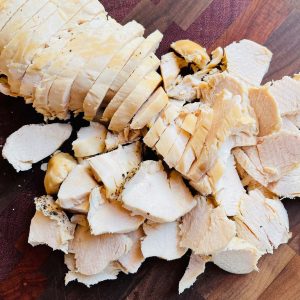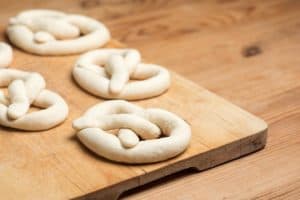There are many variables involved in making the perfect cookie, but certain ingredients and reactions that occur in the oven make all the difference. Learn how to make THE BEST chocolate chip cookie EVER using cookie science!
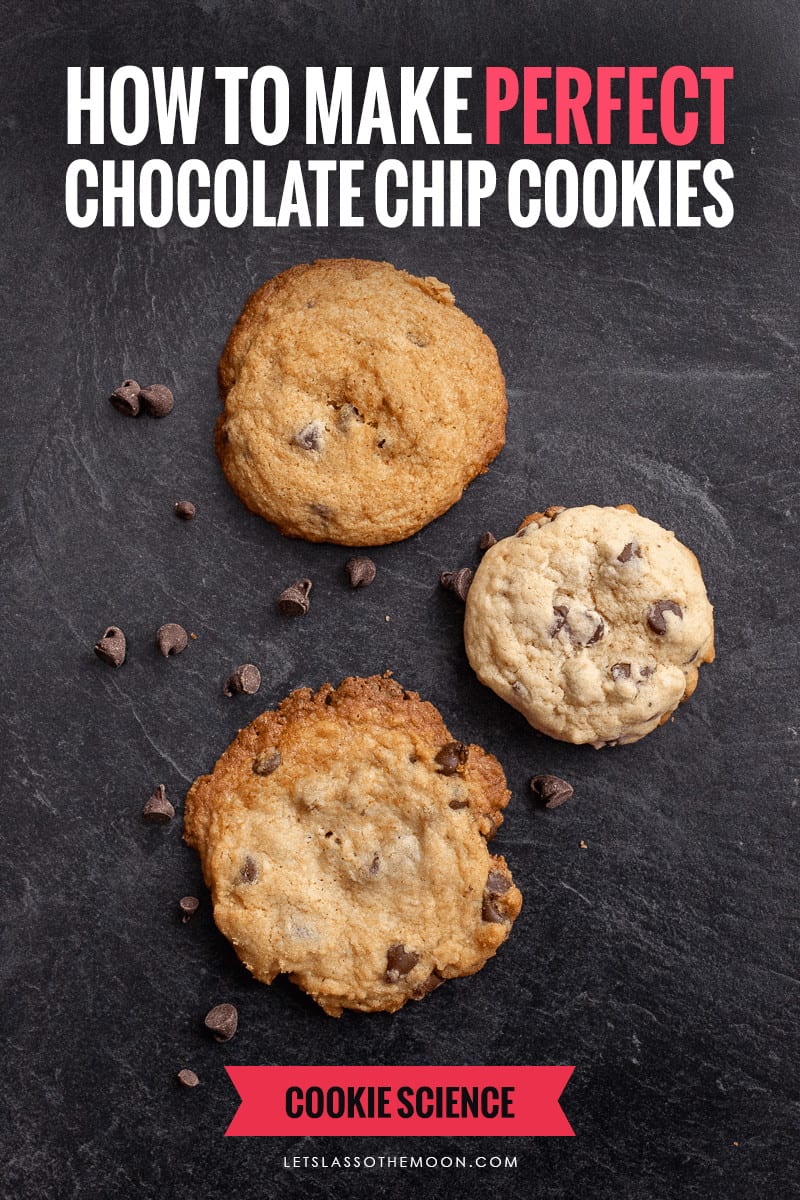
We have an ongoing heated debate at our house — What do perfect chocolate chip cookies look like? Should they be thin and crispy, thick and cakey, or soft and chewy?
What does YOUR perfect batch of cookies look like? If you understand the science of cookies, you can make slight modifications to the NESTLÉ® TOLL HOUSE® chocolate chip cookie recipe to make it your own. We'll share some cookie science with you below to help you rock the kitchen the next time you bake.
A quick personal note, we've had a lot of changes at our house over the last year. Both of my daughters recently transitioned from a traditional middle school to a local project-based learning charter school. In our house, we believe kids need to go beyond knowledge to succeed in today's world. The experience has been amazing so far!
My thirteen-year-old daughter has become obsessed with the science of chocolate chip cookies. So obsessed that she decided to research and study the science of baking.
I love that my daughter has been learning chemistry by researching how to make THE BEST chocolate chip cookie recipe. As part of her recent school project, she even polled her classmates asking:
Of all the different types of chocolate chip cookies, which is your favorite?"
Do you agree with the kids' consensus that soft and chewy chocolate chip cookies are THE BEST?
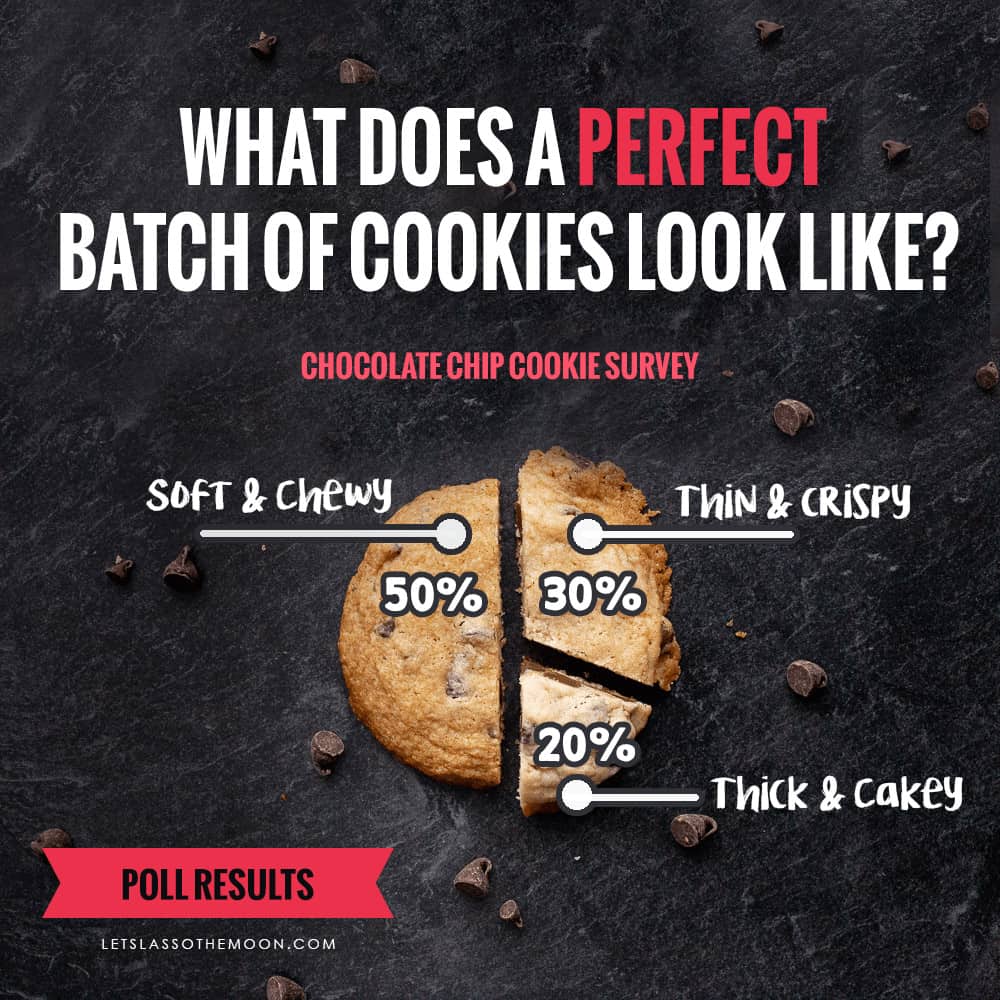
We've been sampling a variety of different chocolate chip cookies "in the name of science." My daughter has been a baking machine this month in her quest to understand cookie science. I never knew helping my kids with homework could be so DELICIOUS.
She's given me permission to publish her research below and I'm excited to share all the interesting things we've learned as a result of this school project.
All that being said, I do want to give a shout out to the bakers who've created our favorite recipes for making THE BEST chocolate chip cookies.
THE BEST Chocolate Chip Cookie Recipes
Here are the three chocolate chip cookie recipes we use time and time again at our house:
- Thin and crispy — We've got to give a shout out to the Pioneer Woman for her Malted Milk Chocolate Chip Cookies. Even after playing with chocolate chip cookie recipes for a month, THIS RECIPE remains our favorite.
- Thick and cakey — Baker Bettie has been my daughter's online mentor throughout this project. A good family friend introduced us to her Thick and Cakey Chocolate Chip Cookies (Thanks Jen!). Ahhhhhh-mazing.
- Soft and chewy — I'd still argue that the TOLL HOUSE® original chocolate chip cookies recipe from the back of the bag of NESTLÉ® Chocolate Chips is a classic favorite. It is also a great starting point when experimenting with cookie science! Get a paper printable of it below.
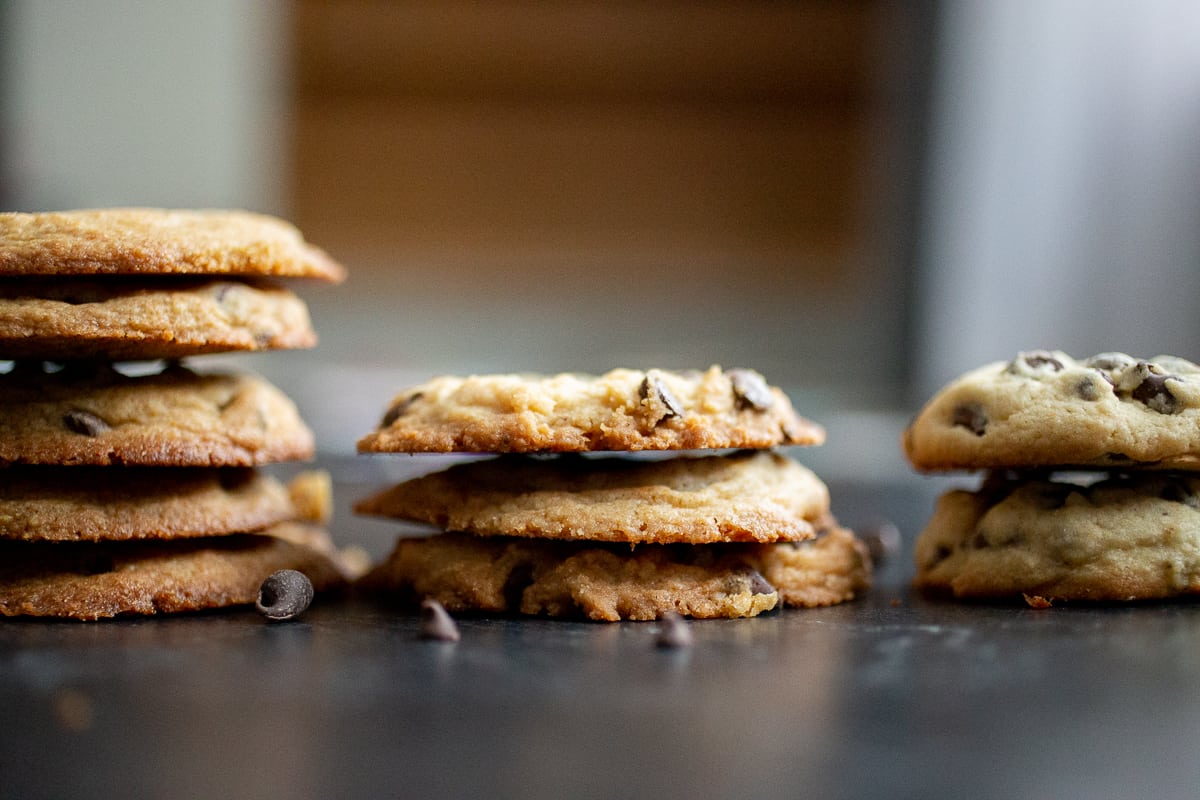
Here's my daughter's cookie science research. I hope you enjoy it as much as I did!

![]()
How to Make the Best Chocolate Chip Cookies?
In 1938, Ruth Graves Wakefield, the owner of Toll House Inn, accidentally invented one of the world’s most treasured culinary desserts, the chocolate chip cookie. Since then, bakers everywhere have been perfecting their own recipes.
You can learn how to make THE BEST chocolate chip cookies by understanding the cookie science of each of the ingredients required in a recipe.
Start by reviewing the original TOLL HOUSE® original chocolate chip cookies which you can find on any bag of NESTLÉ® Chocolate Chips!
TOLL HOUSE® Original Chocolate Chip Cookies

Perfect Chocolate Chip Cookies
The chocolate chip cookie that started it all! NESTLÉ® TOLL HOUSE® original chocolate chip cookies are a true classic and the go-to cookie for all occasions!
Ingredients
- 2 ¼ cups All-purpose flour
- 1 teaspoon Baking soda
- 1 teaspoon Salt
- 1 cup (2 sticks) Butter, softened
- ¾ cup Granulated sugar
- ¾ cup Brown sugar, packed
- 1 teaspoon Vanilla extract
- 2 large Eggs
- 2 cups (12-oz. pkg.) NESTLÉ® TOLL HOUSE® Semi-Sweet Chocolate Morsels
- 1 cup Nuts, chopped
Instructions
- Preheat oven to 375°F.
- Combine flour, baking soda, and salt in a small bowl.
- Beat butter, granulated sugar, brown sugar, and vanilla extract in large mixer bowl until creamy. Add eggs, one at a time, beating well after each addition.
- Gradually beat in flour mixture. Stir in morsels and nuts.
- Drop by rounded tablespoon onto ungreased baking sheets.
- Bake for 9 to 11 minutes or until golden brown. Cool on baking sheets for 2 minutes; remove to wire racks to cool completely.
Cookie Science: 5 Important Ingredients for Chocolate Chip Cookies
There are many major game-changers that chefs keep in mind when creating their recipe. They look at essential things that can make a difference including the science of:
- Butter
- Sugar
- Eggs
- Flour
- Baking soda or powder
What happens in the oven is also crucial when it comes to creating the perfect cookie for you, whether that be thin and crispy, soft and chewy, or thick and cakey.
Let's go over each of the five essential cookie ingredients and how they affect cookies.
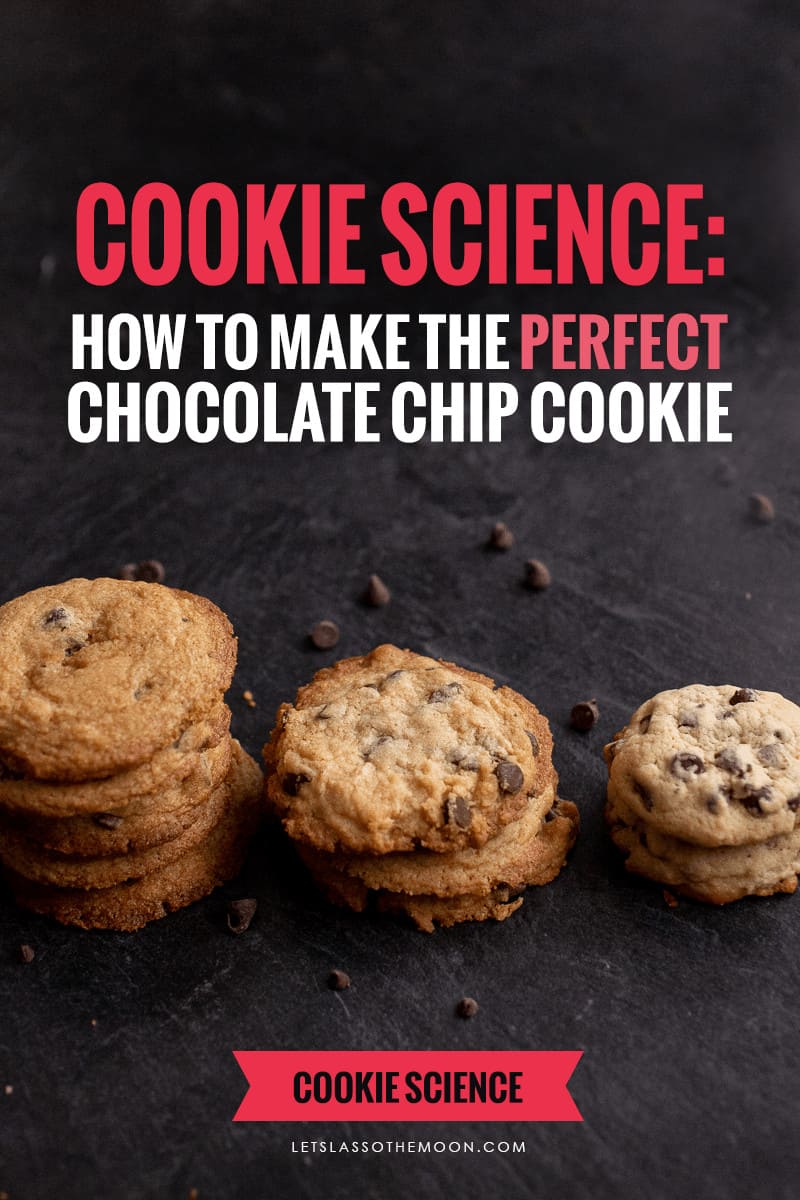
1. Butter— Emulsion Explosion
Butter is a critical ingredient in a chocolate chip cookie. It creates that classic cookie flavor. Butter is something called an emulsion. An emulsion is a mixture of two things that don’t want to stay together. In this case, water and fat. Butter happens to be made out of that chemical compound and that dairy product.
In the oven, the butter melts, releasing the water and creating air pockets in a cookie. Melted butter can create a greasy dough. The chocolate chip cookie will also spread more, and be slightly denser and chewier. While room temperature can produce an all-around cakey and more airy cookie.
2. Meet the Two Sugars
The first step of almost every recipe is to cream the butter and sugar. This process helps dissolve the sugar and incorporate air into the dough for further leavening. There are two types of sugar to consider: brown sugar and white sugar.
Brown sugar is mostly crystallized sucrose, but it also is 3.5% molasses. Brown sugar contains acidity, from the molasses, that reacts with baking soda a little more than usual, creating a puffier cookie with less spread.
White sugar is a crystallized sucrose molecule combined with a glucose molecule. White sugar creates a thin, lighter and more delicate cookie.
3. The FUNction of Eggs
Another ingredient that has structural importance is eggs.
Extra egg yolks create a fudgy and dense product. It does this by producing a tender protein called coagulum, and it also provides a second source of fat, other than butter.
Extra egg whites produce a dry and airy cookie. Egg whites hold air very well, and they use that air to dry out a chocolate chip cookie.
4. Flour Power
Even though sugar and butter are extremely important to include in cookie dough, so is flour. The gluten in flour provides the bulk of the structure in a chocolate chip cookie. Gluten adds toughness and chewiness to a cookie.
There are three types of flour; cake, bread, and all-purpose flour.
- When you think of cake, it’s light and airy and delicate. This is because cake flour contains a small amount of protein; therefore, it creates a small amount of gluten.
- When you think of bread, it holds together well. So bread flour creates an extra chewy outcome when used in cookies.
- All-purpose flour creates the classic cookie texture, while cake flour produces a product, not unlike cake, mostly because there is a huge amount of flour in the dough itself.
The flour to butter ratio also contributes to the end product. If a cookie has a larger amount of butter, it will be thin and lace-like, but if it has more flour it will barely spread and have a thick and doughy texture. When flour and water combine, they make gluten. When the dough is baking, flour proteins are coated in butter. This protects the flour proteins from combining with water, so the cookie will become crumbly and have little structure because of the lack of gluten.
5. Baking Soda vs Baking Powder
What does baking powder do in cookies? How is baking soda different? Leavening agents like baking soda and baking powder react with different things throughout the dough-making and baking process.
Baking soda has one ingredient, sodium bicarbonate. Baking soda is natural and reacts with acids in the dough, like the molasses in brown sugar. This produces carbon dioxide and makes a cookie larger in size.
Baking powder has two acids built in, so it does not need the acids from brown sugar. Once you add any liquid to baking powder the first acid, already inside baking powder, reacts with it. When you are making the cookie dough, this mixture starts producing carbon dioxide right away. The second powdered acid reacts after being heated.
The Science of Baking Cookies
Considering the ratios and amounts of ingredients is important, but, what happens in the oven can change everything.
- At precisely 92° the butter in the cookie melts and spreads, releasing water from the butter emulsion. This water will turn into steam later on and create air bubbles and pockets.
- When the cookies reach a temperature of 136° salmonella dies off, and at 144° the changes in egg proteins begin. When eggs are fresh from the hen, their proteins are shaped like little balls of strings. This gives a runny food like eggs substance and structure. When these strings are introduced to a certain amount of heat energy, they unfold and tangle with their neighbors.
- At 212° water boils off, and like mud baking in the sun, your cookie dries out.
- When the cookie hits 310° the Maillard reactions occur. The Maillard reactions are a series of complex reactions between amino acids and sugars. Proteins and sugars in the cookie rearrange themselves into ring-like structures that reflect light in an appetizing way.
- Caramelization, on the other hand, 356° and continues to 390°. Caramelization is when sugar molecules break making the sweet, nutty, slightly bitter flavor compounds that define caramel.
There are many variables involved in making the perfect cookie, but certain ingredients and reactions that occur in the oven make all the difference. All of these chemical reactions create a classic and delicious chocolate chip cookie.
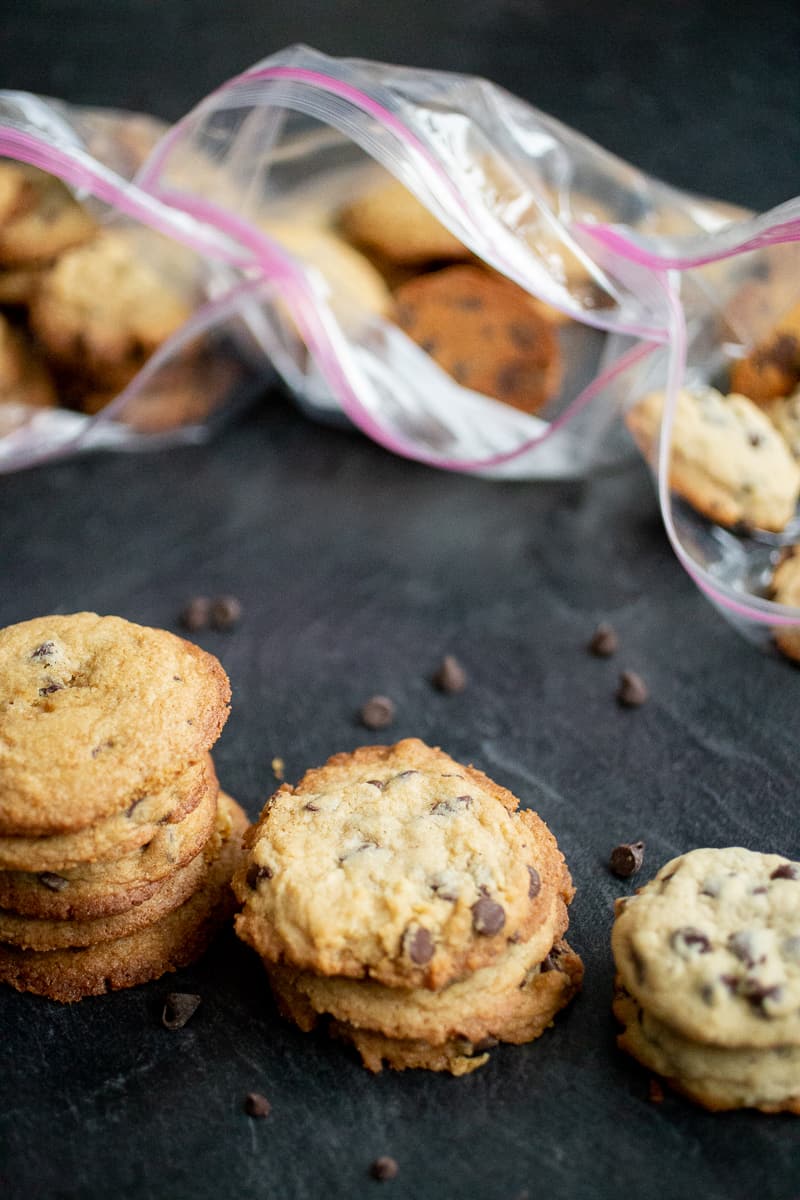
Making THE BEST Chocolate Chip Cookies Is Up To You Now!
I’m sure Ruth Graves Wakefield never thought about the science of the cookies she invented, but many people have, including me (and you!). When Wakefield added chocolate chunks to cookie dough, thinking they would melt, she created the coveted chocolate chip cookie. She'll never know that today, the average American adult eats 35,000 of her creations in a lifetime. People all over the world have created variations of her chocolate chip cookie recipe that are beyond amazing, all just because someone lucky made a mistake.
What will your recipe variation look like now that you know the science of chocolate chip cookies?!?
![]()
Project Resources — AKA Additional Info For YOUR Quest to Bake Perfect Chocolate Chip Cookies!
- Hoffman, Kristin. “Soft and Chewy Chocolate Chip Cookies.” Baker Bettie, 8 Oct. 2018.
- Hoffman, Kristin. “Thick and Cakey Chocolate Chip Cookies.” Baker Bettie, 8 Oct. 2018.
- Hoffman, Kristin. “Thin and Crispy Chocolate Chip Cookies.” Baker Bettie, 8 Oct. 2018.
- “How To Bake A Better Chocolate Chip Cookie.” NPR, NPR, 10 July 2008.
- Joachim, David. “The Science of Baking Cookies.” The Science of Baking Cookies.
- Joseph, Thomas. “The Science Behind the Perfect Chocolate Chip Cookies - Kitchen Conundrums with Thomas Joseph.” YouTube Video, YouTube, 19 Aug. 2014.
- Kenji, J. “The Science of the Best Chocolate Chip Cookies | The Food Lab.” Serious Eats, Serious Eats, 5 Feb. 2019.
- Tasty, Tasty. “How To Make Perfect Chocolate Chip Cookies.” YouTube, YouTube, 29 Apr. 2018.
- Warren, Stephanie. “The Chemistry of Cookies - Stephanie Warren.” YouTube Video, YouTube, 19 Nov. 2013.

